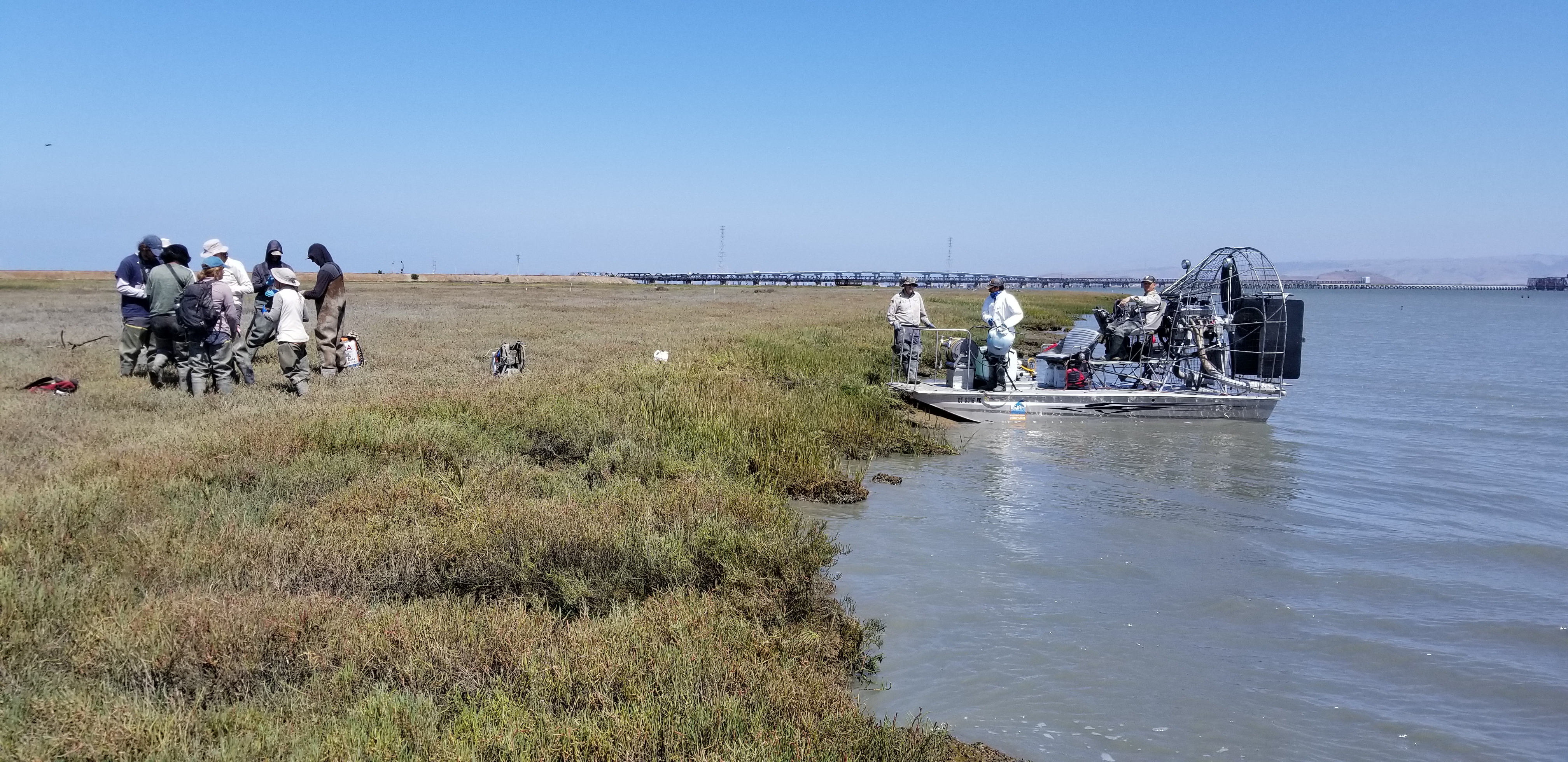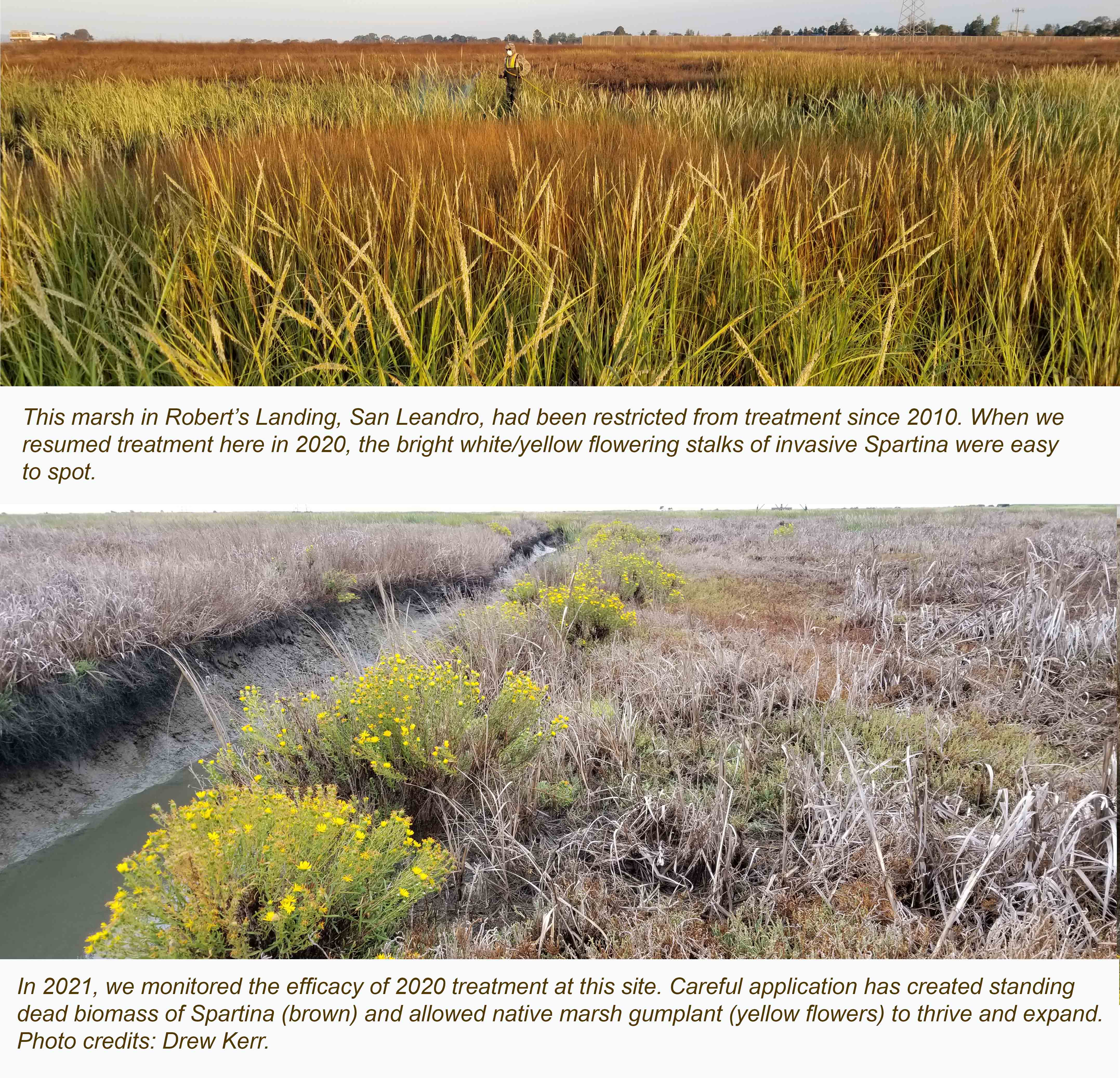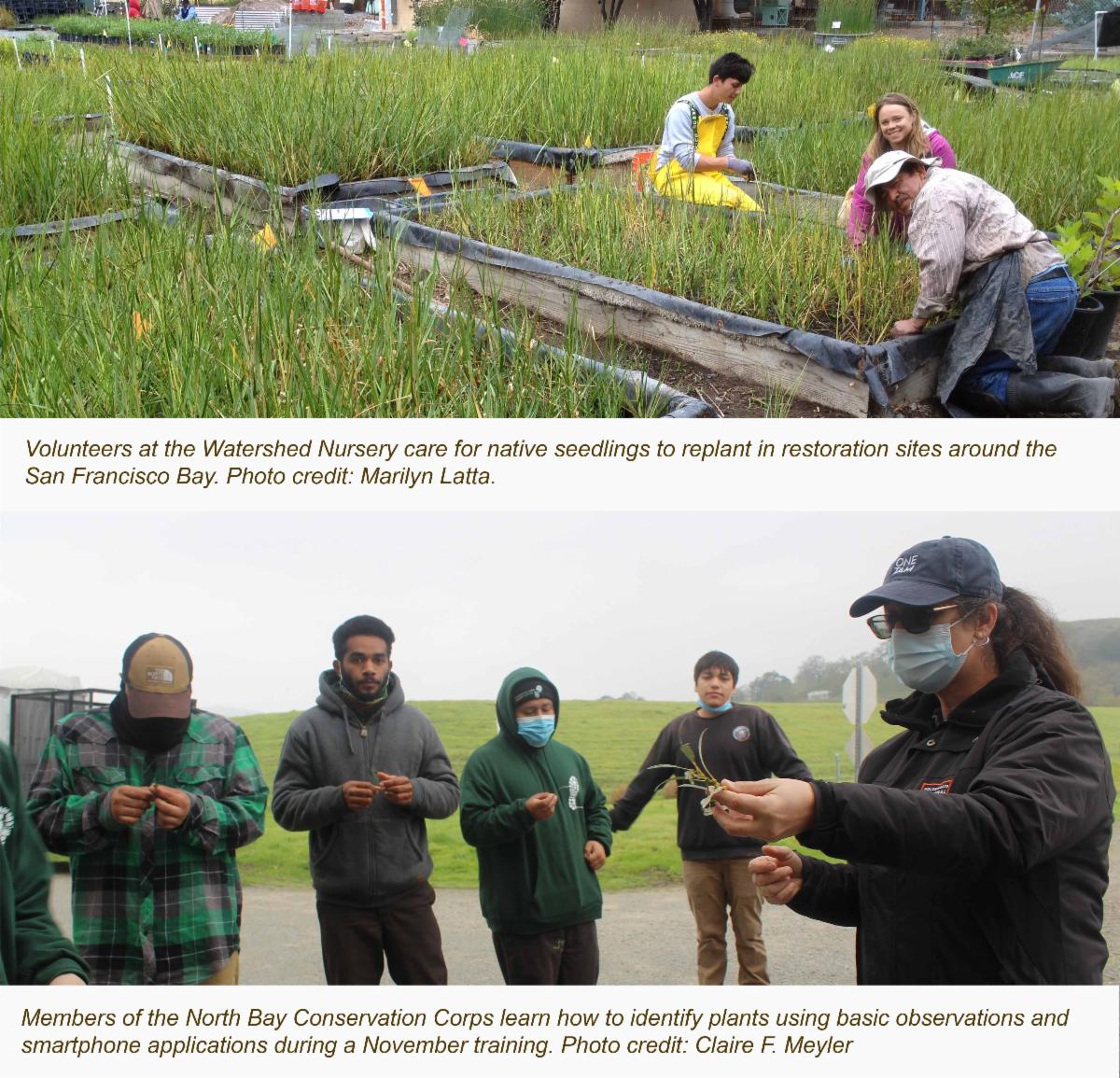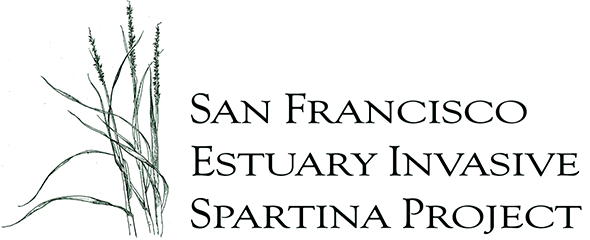
The SF Estuary Invasive Spartina Project (ISP) continues to make strong progress on the eradication of invasive Spartina (cordgrass), protecting native tidal marshes and mudflats across the 70,000-acre project area in San Francisco Bay. The California Invasive Plant Council (Cal-IPC) is proud to be a lead partner in this effort, and we appreciate all of the hard work by Olofson Environmental, East Bay Regional Park District, San Mateo County Mosquito & Vector Control District, the State Coastal Conservancy, US Fish and Wildlife Service, California Department of Fish & Wildlife, and our many partners baywide who continue safe field work even with the added complexities of the pandemic and climate change.
Here are a few key highlights for June-November 2021.
COVID Field Safety Plans:
The State Coastal Conservancy, USFWS, and Olofson Environmental prepared safety plans to allow safe program field work to continue. This includes physical distancing, reduced carpooling, masking, and careful reporting and cleaning protocols to prevent the spread of COVID-19, as well as safety plans and protocols for wildfire smoke and heat waves. Our team of partners has risen to these challenges and has been able to maintain our progress through extremely hard physical field work under difficult conditions.
Treatment and Monitoring:
Invasive Spartina treatment work is almost complete for the 2021 season! A total of 153 sites were treated, beginning in early June and slated for completion during the first week of December. Treatment crews are trained to work in these sensitive wetland habitats, and conduct the permitted herbicide application work in carefully planned tidal windows via airboats, whalers, kayaks, trucks staged on adjacent levees, and on foot by backpack. Progress from past years resulted in much smaller infestations to treat this year at multiple sites, including Calaveras Marsh (in Don Edwards National Wildlife Refuge), Palo Alto Baylands, Citation Marsh, and San Pablo Marsh up in the north bay, just to name a few.
Invasive Spartina monitoring field work started on June 4 at Riviera Circle and San Clemente Creek in Marin County, and has continued at a total of 214 sites through November 30. This mapping work is critical to correctly identifying invasive Spartina locations in the field, and includes both field assessments and genetic testing of plant samples when needed.
In 2021, no invasive Spartina was detected in the tidal marshes and mudflats stretching from the Golden Gate Bridge (San Francisco County) south to San Bruno Marsh in South San Francisco (San Mateo County). Similarly, the shorelines and marshes along western San Pablo Bay between Point San Pedro (Marin County) and the mouth of Sonoma Creek (Sonoma County) have now been free of invasive Spartina for four years. The results of this year’s monitoring will be compiled in the coming months. The total baywide net area of invasive Spartina as of 2020 monitoring was 33 net acres, a reduction of 96% since the program started. We are now at a critical juncture to continue towards completion of this important work. Please see our 2019-2020 Monitoring and Treatment Report.

Restoration:
Propagation of marsh gumplant, native cordgrass, and other plants is underway for the 11th year at The Watershed Nursery. These plants will be used to restore habitat for Ridgway’s rails and other wildlife. This winter, we will plant another 22,000 seedlings as part of our revegetation and high-tide refuge islands construction projects, planned at 14 sites in December and January. We’re hoping for good winter rains to nourish the plantings! HT Harvey and Hanford ARC have patiently delayed the construction of 10 high-tide islands last year due to COVID-19 lockdown restrictions. In December 2021 and January 2022, these islands will be built at Dumbarton Marsh and Bair Island.
Local small business partners:
All of the work above is done by a mix of local, state, and federal partners, as well as a variety of small local businesses and nonprofits: Cal-IPC is a statewide nonprofit with a staff of six; Olofson Environmental is a small woman-owned environmental consulting firm; Hanford ARC is a locally-owned restoration construction contractor in the North Bay dedicated to growing the ecological workforce; Friends of Corte Madera Creek is a local environmental non-profit in Marin County; and The Watershed Nursery is a small women-owned local native plant nursery in Point Richmond. We depend on these and other partners and are grateful for their development of green jobs that improve the environment in our region.

Outreach
Our team has been making presentations to share updates on the Invasive Spartina Project with local environmental organizations. On November 17, Jeanne Hammond (ISP Restoration Program Manager) and Lindsay Faye Domecus (ISP Environmental Biologist) presented a webinar to the California Native Plant Society, East Bay Chapter.
As part of this project, we are training Conservation Corps members on the basics of habitat stewardship and invasive plant management. Over the summer, we led two hands-on field days with Civicorps and a full-day training with San Jose Conservation Corps. In November, we completed a full-day training with the North Bay Conservation Corps. Our team is planning ahead for more training sessions in spring 2022.
We are preparing for a busy winter season! Please don’t hesitate to contact us at info@spartina.org with any Spartina sightings or site questions.
